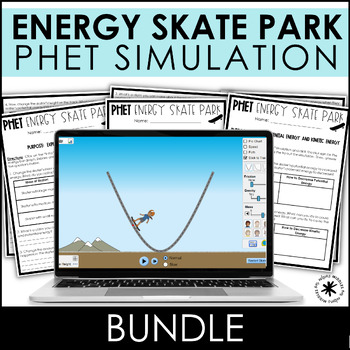Energy Skate Park PHET Lab Worksheets- Potential & Kinetic Energy Bundle
- Zip
- Internet Activities
What educators are saying
Products in this Bundle (3)
Description
Description:
Do you need an easy and quick way for your students to explore potential and kinetic energy? This bundle of resources includes three different resources that each include a student handout and lesson slides for the PHET Energy Skate Park Simulation. Part 1 has students explore kinetic energy and how mass and speed affect the amount of kinetic energy. Part 2 has students explore potential energy and how mass, height, and gravity affect the amount of gravitational potential energy. And, part 3 focuses on how potential and kinetic energy are related and what the law of conservation of energy is. This bundle is aligned to MS-PS3-1, 2, & 5 and allows students to draw their own conclusions about potential and kinetic energy.
*MUST HAVE POWERPOINT TO EDIT THIS RESOURCE!
What's Included? Each Resource Includes:
- Link to PHET Simulation
- Teacher directions
- Student handout (editable PowerPoint file & a PDF file)
- Answer Key for student handout
- Editable PowerPoint slides to guide the lesson
- Editable Google slides to guide the lesson
How I Like to Use This Product:
This is an exploratory lesson on potential and kinetic energy. I enjoy not giving my students any prior knowledge so they can use the PHET simulation to explore the concepts and draw their own conclusions based on their observations.
Thank you for visiting my store! I am SO honored you are here! Being able to share ideas with other teachers brings me great joy! If you like this product, please leave a review or share a picture on Instagram of this product in your classroom! Don’t forget to tag @mrsnelsonsmiddles!




